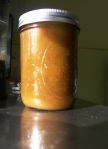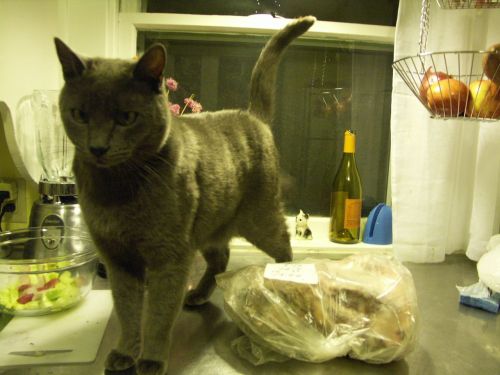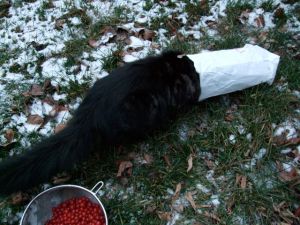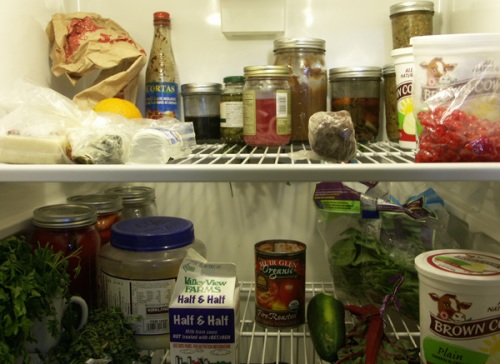 In my vision, the highbush cranberry sauce crosses the River Styx. Or the River Yahara, maybe. Anubis places its bitter heart on one side of the scale, and weighs it against a sugar cube. If the cranberry falls, it goes to hell and the compost bin. The sugar falls, and we all go pick more cranberries in the Elysian Fields, which, the Egyptian mythmasters forgot to mention, is full of cranberry bushes. Just like Madison.
In my vision, the highbush cranberry sauce crosses the River Styx. Or the River Yahara, maybe. Anubis places its bitter heart on one side of the scale, and weighs it against a sugar cube. If the cranberry falls, it goes to hell and the compost bin. The sugar falls, and we all go pick more cranberries in the Elysian Fields, which, the Egyptian mythmasters forgot to mention, is full of cranberry bushes. Just like Madison.
I’m the lone taster so far, but I think the highbush cranberry is redeemed (See previous post: “Theory: If the highbush cranberry were any good, it would have been eaten by now.”) I offer you all this recipe to illustrate my experiment, not as the last word on the berries. Lacking a sieve, my straining method is primitive and laughable, my return on cranberry goop meager.
Recipe: Chipotle-cranberry barbeque sauce.
Makes a little more than one pint. You could easily improve that yield.
3 cups highbush cranberries
1/2 cup chopped onions
bit of oil
1/2 cup champagne vinegar (I’d use cider vinegar if I had it.)
1 cup brown sugar
1 dried chipotle pepper
pinch cloves
pinch allspice
several pinches cinnamon
pinch white pepper
salt to taste
1. Start hydrating that leathery old chipotle pepper in hot water.
2. Cook cranberries in water until they’re soft.3. Meanwhile, saute the onions in a bit of oil. (Other recipes say to boil the onions with the berries. But then they clog the strainer—and you don’t get the lovely Maillard flavors.)
4. Strain the berries. I forced the berry goop through my bowl-shaped strainer, and for Pete’s sake, you ought to be able to do better. Pureeing in the blender is a terrible shortcut, let me tell you. The highbush cranberry has a single large seed that just kills the party whenever it is encountered.
4. Add the onions. Puree the result in the blender.5. Add everything else. Cook it down for a half-hour or more. The flavors meld, and it turns from a pinkish red to a lovely golden brown.
A variation: Cook it less, and leave out the chipotle, and you’d get an interesting, bitter-edged ketchup.
There you go. I imagine it would go well on pork or, if you don’t eat pork, raccoon.







